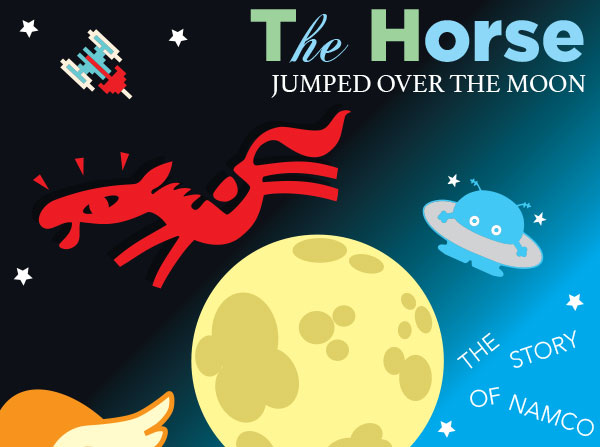
Namco had a fun showing at the Expo '85; officially called Kokusai Kagaku Gijutsu Hakurankai, "The International Science Technology Exposition”. It was a world's fair held in Tsukuba, Ibaraki. The “DaVinci of Namco” Mr. Shigeki Toyama, and many other employees at Namco felt underprepared, and even snubbed by the Expo committee. As one the top creators of entertainment robots they were asked to present at the expo, but not get their own dedicated Pavilion. They might have felt pigeonholed as the people that made cute robot mice. That was a bit disrespectful as Namco was by that time the top producers of amusement rides, electromechanical, robotics, and video game attractions in Japan. I mean, did they even ask if Pac-Man could appear at the Expo? The company had five years to plan their revenge, while at the same time dropping hit, after hit, in the arcades.
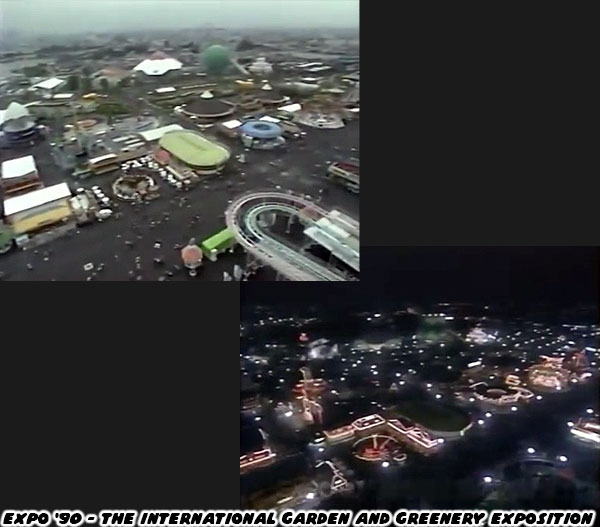
Expo '90 “Kokusai Hana to Midori no Hakurankai” or The International Garden and Greenery Exposition. Sometimes referred to as the “Flower Expo” was organized as a part of the International Expositions Convention. It was the first large-scale international gardening exposition in Asia. It focused on the theme of the "Harmonious Coexistence of Nature and Mankind." The exposition was held in Tsurumi Ryokuchi, Osaka for 183 days, from April 1 to September 30, 1990. The convention included participation from 83 countries, 55 international organizations, and attracted over 23 million visitors.
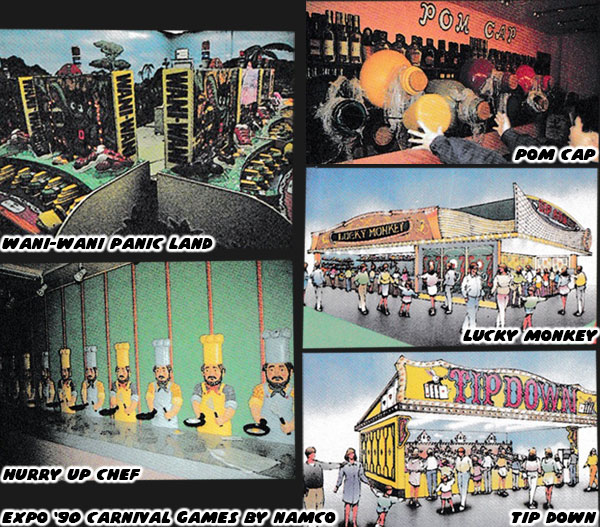
Namco built a number of classic carnival-type games for the midway, many of which were updated version of their arcade hits. But more important, they featured two attractions in what was called the “Magical Cross” amusement area. This area of the expo also had the more traditional carousel, roller coaster, and Ferris wheel that visitors were used to seeing. The two attractions built by Namco were radical new ideas. Galaxian³,
which I had already written about extensively was at this Expo. The other was The Tower of Druaga, also called the “Tower of the Dark Ride.”
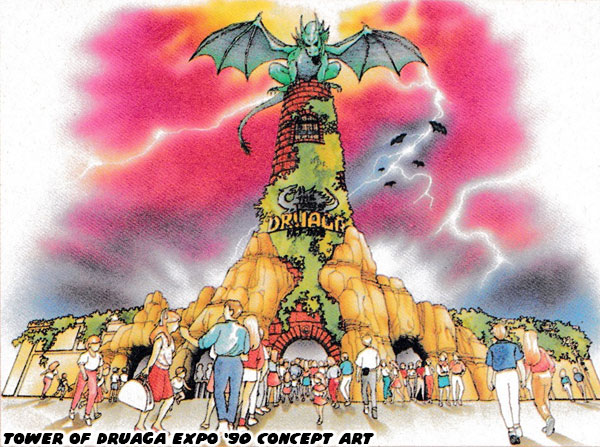
The Tower of Druaga was an arcade classic from 1984. It might be the most under-appreciated title in the USA. This was possibly because it was a western style RPG, which wasn’t anything major in the US, but was revolutionary in Japan. The Tower of Druaga was the first Namco game to have an ending instead of looping or going to a kill screen. The music was composed by the amazing Junko Ozawa. This was the first title in the Babylonian Castle Saga. The series was created by Masanobu Endō, who had previously created the sci-fi classics
Xevious, and Grobda. It was important in the role-playing genre because its characters and setting were inspired from Sumerian and Babylonian mythology, such as The Epic of Gilgamesh and The Tower of Babel. Arguably the two oldest origin myths in pre-history. Very few traditional paper-and-pencil role playing games, tabletop games, and video games were set in that era.
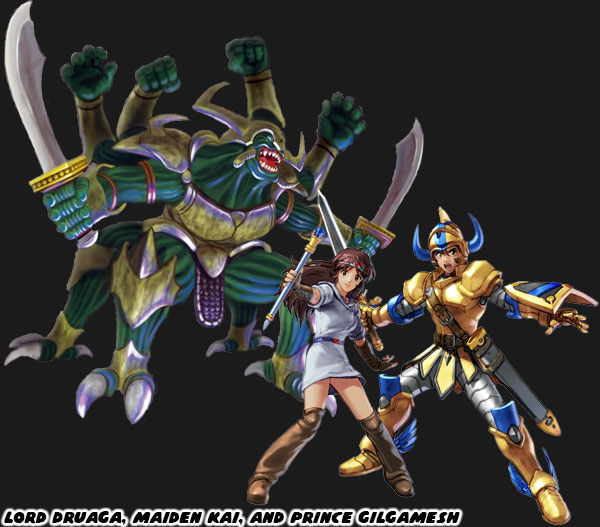
The Druaga series featured the golden armored Prince Gilgamesh, nicknamed Gil, and the maiden Ki (sometimes written Kai), in their efforts to protect the mythical Blue Crystal Rod, a gift of light from the Goddess Ishtar. They were trying to seal away Lord Druaga, a four-armed demon who had escaped his ancient prison. He was trying to get the rod to enslave the human race. The Tower of Druaga would spawn a total of nine sequels, including the Return of Ishtar (1986), the Quest of Ki (1988), the Blue Crystal Rod aka the Destiny of Gilgamesh (1994), and the Nightmare of Druaga: Fushigino Dungeon (2004). The last spin-off was the Labyrinth of Druaga (2011). All of this was alongside a manga, soundtrack albums, board game, role play supplements, and two anime series by Gonzo K.K. Later entries in the series would be developed by Endo's personal game company, Game Studio.
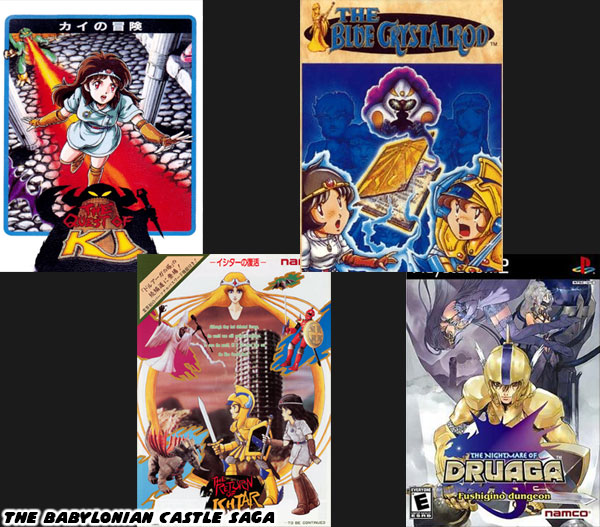
The Tower of Druaga was a breath of fresh air when it hit the arcades. Maze games, space shooters, and racing games were the most popular genres of the era. Suddenly there was an adventure game that had you going through levels of progressive difficulty, fighting all sorts of fantastic monsters. Even though you were going through a labyrinth, it wasn’t a maze game like Pac-Man. The stages were pretty big, and the screen scrolled left, and right. There were also secrets to discover; treasure, armor, weapons, and magic while crawling through the labyrinths. These things were not always en route to the next staircase. Meaning that it was possible to play through multiple times, and discover new things each time on the 60 floors in the game. This type of adventure predated the Atari hit Gauntlet by a year, Blizzard’s Diablo by 13 years, and the Binding of Isaac by 27 years.
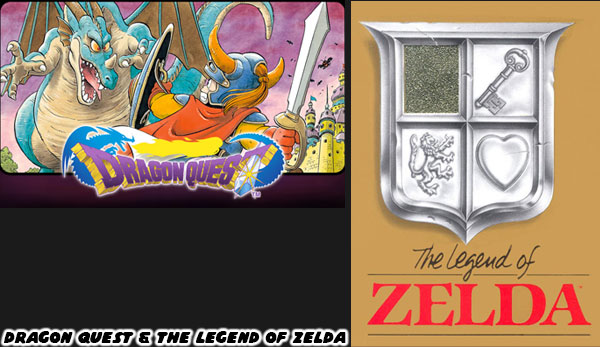
The Tower of Druaga was not only popular with the arcade visitors, it ended up inspiring rival studios in Japan. Namco ended up planting the seeds that would guide the creation of Dragon Quest (1986), The Legend of Zelda (1986), Ys (1987), and Hydlide (1984). Dragon Quest co-creator Koichi Nakamura had also cited the series as a key inspiration for him. Japanese fans of the Druaga series defended its place in the pantheon of arcade classics, however the international reaction was mixed. They argued that it was extremely difficult, and had a steep learning curve. Despite its historical significance I would agree that just because a game was first it didn’t mean it was the best in the genre. For example Taito started a revolution with Space Invaders in 1978, but Namco’s Galaxian later that same year, and Sega/Gremlin's Space Tactics in 1981 were superior in every regard. As for the role-playing games I mentioned above, especially Dragon Quest, and The Legend of Zelda, both had strong critical, and commercial success. This was because they took elements from The Tower of Druaga, and improved upon them in different ways.
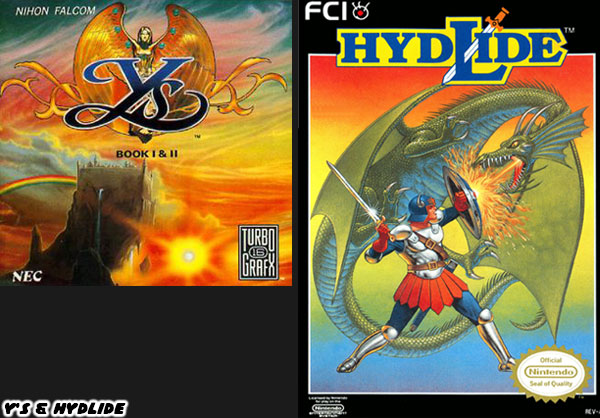
No matter where audiences felt about the importance of The Tower of Druaga everyone could agree that Junko Ozawa’s musical score was brilliant. Several games in the Babylonian Castle Saga would be ported over to both digital storefronts, and various Namco video game collections over the years. The question was how would Namco turn an adventure RPG into an attraction at the Expo '90? We will look at this in the next blog. I hope to see you back for that. Did you ever play The Tower of Druaga, or any of the other games in the Babylonian Castle Saga? Let me know in the comments section. As always if you would like to sponsor me
please visit my Patreon page and consider donating each month, even as little as $1 would help make better blogs and even podcasts!
Wonder Eggs, and Egg Empire research collected from: Wonder Eggs Guide Map, Namco Graffiti magazine, the book “All About Namco II", NOURS magazine, The Namco Museum, Namco Wiki, Ge-Yume Area 51 Shigeki Toyama Collection, mcSister magazine, first person attraction details from Yoshiki. Event details from Hole in the Socks
















Hydlide came out in '84 and Ys came out '87. Not '89.
ReplyDeleteWhen you said Hydlide came out in '89 I was like "There's no way. That game is primitive as hell!"
Thanks for the corrections, it's updated!
Delete